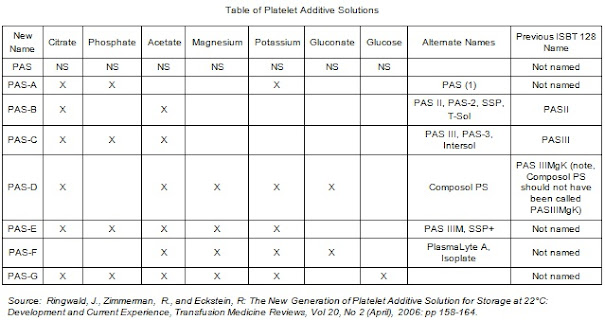What is ADAMTS13?
ADAMTS13 stands for "A disintegrin and metalloproteinase with a thrombospondin type 1 motif, member 13". If you can't remember that, just remember that it's also known as von Willebrand factor-cleaving protease. It's easy to see, though, how you could mistake it for someone's online username or handle. Or even AIM screenname if I may date myself. I wouldn't be surprised if someone has that taken as a handle on PathLabTalk.
ADAMTS13 is a important protein involved in regulating coagulation. It helps to break up unusually large von Willebrand factor monomers and vWf/platelet complexes. It interacts with von Willebrand factor to aid in the breakdown of platelet-vWf complexes that may start to form. As we know, platelets bind to vWf to form these complexes to ultimately aid in platelet adhesion at a wound site. ADAMTS13 essentially cuts through these complexes breaking them into smaller pieces, which can then be further broken down by proteases if need be.
Without the ability to breakdown these unusually large monomers of vWf, they can continue to grow unaffected. As platelets pass through circulation they will begin to adhere and bind to these monomers increasing in size. This not only increases the risk of a large thrombus or clot forming within the vasculature, it also starts to use up platelets in the process making them unusable, were an actual bleed to form. As such you can start to have clotting issues and bleeding issues concurrently as platelets start to get used up in the every growing thrombus.
TTP (Thrombotic Thrombocytopenic Purpura)
ADAMTS13 deficiency is well noted in TTP (Thrombotic Thrombocytopenic Purpura). A large number of patients with TTP have abnormal ADAMTS13 enzyme activity. Lowered ADAMTS13 activity can be seen in other conditions (such as Hemolytic Uremic Syndrome), however, an activity of less than 10% is highly suggestive of TTP given other clinical correlations. This deficiency can be acquired or genetic. Mutations in the ADAMTS13 gene will give rise to impaired enzyme production and function. As a congenital disease, this is known as Upshaw–Schulman syndrome. This is rare and an autoimmune (acquired) etiology is the more likely culprit of pathology.
The large majority of ADAMTS13 deficiency is caused by an autoantibody/inhibitor antibody. These antibodies either inhibit the enzyme from functioning or by clearing the enzyme from circulation completely by tagging it for destruction.
If TTP is suspected or known, platelet transfusions are generally contraindicated, unless under emergent necessitations. Platelet transfusions will simply add to the growing platelet/vWf complexes, potentially causing furthering clotting and additional microangiopathic pathology.
Acquired TTP treatments?
Plasmapheresis -- Plasma exchange procedures have changed the game for patients with acquired TTP. Decades ago prognosis was usually rather poor. Today, however, with proper and timely diagnosis many patients have a much more positive prognosis and outlook. The apheresis section of the Transfusion Medicine department will perform this procedure. Many smaller hospitals will not include an apheresis section in their Transfusion Medicine department. Larger hospitals and hospital systems are much more likely to include an apheresis program within the department. The idea behind performing a PLEX or PEX (Plasma Exchange) is simple. The apheresis machine will remove the patient's plasma (leaving RBCs and platelets in tact) and replace it with an equal amount of donor FFP. This does two important things. By removing the patient's plasma, it is removing the ADAMTS13 antibody/inhibitor. By replacing with donor FFP, you are adding ADAMTS13 enzyme into circulation of the patient as the donors are likely to have healthy levels of ADAMTS13.
This is not a one time procedure. Patients will generally get daily or every other day apheresis treatments until their platelet counts return to normal (usually above 150K). If there is evidence that their platelet counts are starting to drop again, more procedures may be required.
Other treatments that can be concurrent with plasma exchanges are heavy steroids to suppress the immune system from creating more antibody/inhibitor as well as Rituximab which is a monoclonal antibody treatment that targets CD20 on the surface B cells and targets them for removal. By targeting B cells for removal, they will not be able produce antibodies towards ADAMTS13.
